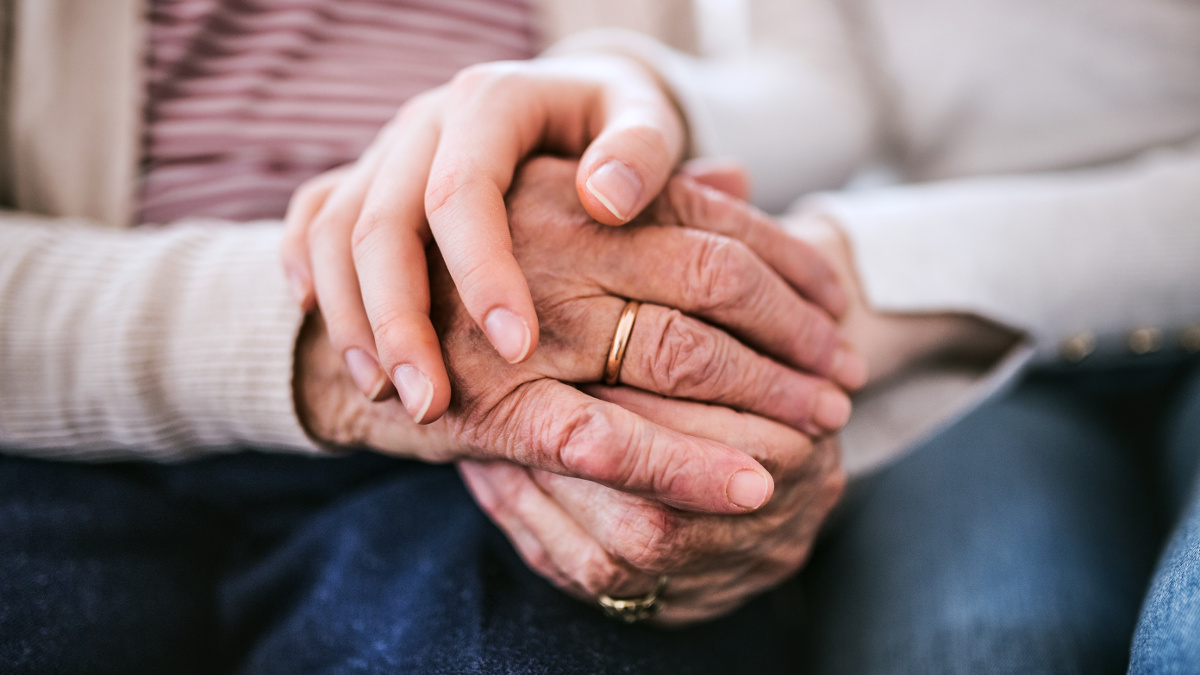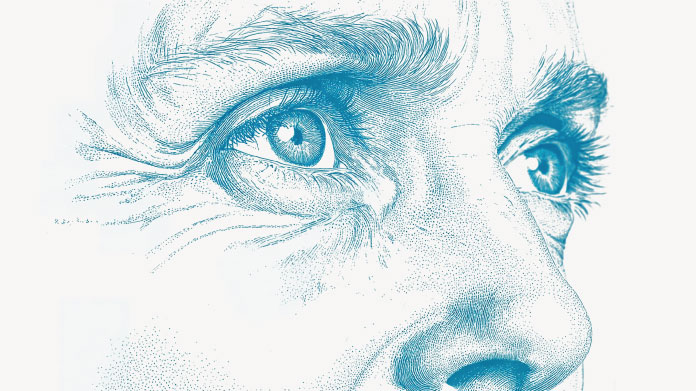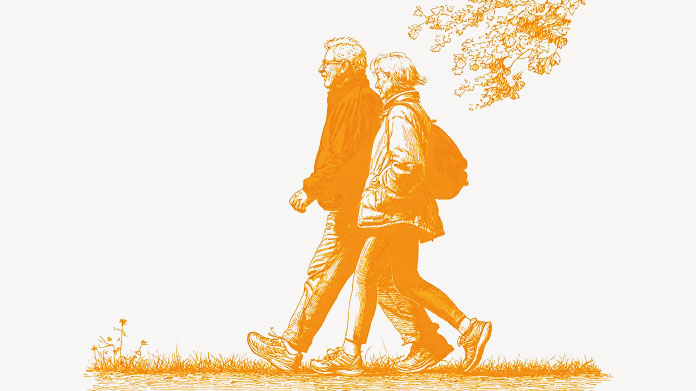What are the various causes of aging?
Aging is the result of a combination of genetic and environmental factors: DNA shortening, oxidative stress, glycation... Here we take a look at the aging process, its causes, and the ways in which we can slow it down.

Shortening of telomeres
Aging is a natural process – the body is genetically programd to age. There is a finite number of times that our cells can divide and replicate. Each time they do so, the telomeres of our chromosomes get shorter – these are the protective tips at the end of each strand of DNA.
There is a limit to a cell’s ability to cope with this shortening, beyond which cellular DNA ceases to replicate, and along with it, the cell. Once this critical length is reached, the process of cell death is triggered. The cell undergoes a morphological change, mobilising the immune system, which ensures the cell is eliminated. Cell death leads more broadly to tissue death, and the body suffers progressive damage. This is part of the body’s natural cycle, but there are other mechanisms which account for premature aging.
Oxidative stress and free radical attack
Oxidative stress is often highlighted as a damaging process for the body, but what is the mechanism behind it?
The process of oxidation which takes place in cells results in the formation of unstable molecules that contain unpaired electrons. These molecules, called free radicals, try to restore their stability by stealing an electron from another molecule. This triggers a rapid chain reaction, which the body is not always equipped to deal with.
The body has a range of natural antioxidant compounds at its disposal which are able to neutralize these free radicals. They include glutathione, enzymes (peroxidase, catalase 12,500, superoxide dismutase...), and vitamins C and E... But when these antioxidant reserves are inadequate, free radical attacks turn into oxidative stress. Along with the accompanying chain reaction, oxidative stress leads to the denaturation of proteins, lipids, and indeed all the molecules that form the body and make it function. Organs, skin, the nervous and cardiovascular systems, the whole body is affected by oxidative stress, and the result is premature aging.
Note
While oxidation occurs naturally in the body, a number of external factors are known to exacerbate oxidative stress. They include smoking, alcohol, a diet low in fruit and vegetables, pollution, UV rays, and stress...
Harmful glycation products
The process of glycation is of increasing interest to researchers investigating aging. It is a mechanism whereby sugars bind to proteins, creating glycated proteins.
It occurs at a greater rate when the body is overloaded with sugar, which is why it is seen more in diabetics. Glycated proteins ultimately produce what are called advanced glycation end-products or AGE: these play a role in premature aging. They cause structural changes, particularly in cutaneous tissues, resulting in a slackening of the skin.
They also damage blood vessel walls, muscle cells and white blood cells... In short, the whole body is affected by excessive glycation. What’s more, AGE are not broken down by the body. Eliminating them is left to the kidneys but they cannot cope with excessive glycation and this leads to the accumulation of harmful residues. It’s another cascade of reactions that promotes premature aging.
Ways of slowing down the aging process
We’re all familiar with the consequences of aging. They can be visible: deep lines and wrinkles, a bent spine, grey hair... and they can also be less obvious but pathological: cancer, neurodegenerative disorders and cardiovascular disease...
In order to slow down the aging process, it naturally makes sense to adopt a sensible lifestyle. Eating a balanced diet high in antioxidants, taking regular exercise, and ensuring you get good quality sleep will all help to reduce oxidative stress and excessive glycation. It is also highly advisable to reduce alcohol consumption and refrain from smoking.
You can go further by taking compounds called senolytics. These molecules are currently being studied by scientists keen to learn more about their ability to slow down cellular aging. Some of these natural compounds are already well-known:
- quercetin, a flavonoid found in capers, red onions and elderberries...;
- fisetin, another flavonoid naturally present in strawberries and mangoes, among others.
Senolytic-based, anti-aging supplements (such as Senolytic Complex and Fisetin) can also provide valuable support in fighting premature aging naturally.
References
- Herranz, N. & Gil, J. Mechanisms and functions of cellular senescence. J. Clin. Invest. 128, 1238–1246 (2018).
- Finkel, T., Holbrook, N. Oxidants, oxidative stress and the biology of ageing. Nature 408, 239–247 (2000).
- Semba RD, Nicklett EJ, Ferrucci L. Does accumulation of advanced glycation end products contribute to the aging phenotype? J Gerontol A Biol Sci Med Sci. 2010 Sep;65(9):963-75.
- Kirkland, J.L., Tchkonia, T., Zhu, Y., Niedernhofer, L.J. and Robbins, P.D. (2017), The Clinical Potential of Senolytic Drugs. J Am Geriatr Soc, 65: 2297-2301.
Keywords
10 Days
A Product worth waiting for when not…
A Product worth waiting for when not available and then arriving as a surprise!
DOMINIC
11 Days
On time shipping
On time shipping
GEORGE Verne
13 Days
Ordering was easy and the product was…
Ordering was easy and the product was delivered with no problems. Appreciated that I was notified when it would arrive. Thanks!
MascarC
19 Days
Great customer service - responsive …
I ordered from them and my item was unavailable for sometime. I was super happy when they reactivated my order and shipped my item which arrived very quickly. Great customer service.
Ruth Rueter
20 Days
Super fast shipping
Super fast shipping
Donald Borling
23 Days
Reputable companysearch and the number of…
The research and the number of selection of products.
NAKHJAVAN Shervin
36 Days
The Anti Aromatase is a great product
The Anti Aromatase is a great product. You just need to have constant inventory. Recently this product has been out of stock.
GEORGE Verne
37 Days
Great help on chat
Great help on chat. Knowledgeable and friendly.
Jason Argos
41 Days
Customer service was fast and friendly.
Customer service helped to stop the transaction process of the subscription. I appreciated that.
Greenie
41 Days
I order here due to the high quality of…
I order here due to the high quality of the products and the quick delivery of items - thank you
Barbara J
43 Days
SuperSmart's Eye Pressure supplements: highly recommended!
I purchase SuperSmart's Eye Pressure supplements regularly for over 5 years, and gotta say they are truly a wonderful product for my Glaucoma. Highly recommended if you have eye pain from your Glaucoma.
D. Martinez
47 Days
Quick service
Quick service
MONELL
48 Days
Speedy service.
Speedy service.
ROSENTHAL Marvin
52 Days
Clear website- Efficient
Clear website. Excellent search engine and fast delivery!
Mohamad Hussein
54 Days
They have great products.
They have great products.
Vickie




Laura S.
13/04/2020
So one can say that constipation is also another contributor of body oxidation? Since the body is not able to get rid off waste efficiently? Anything you can share about that. For some people with IBS and other gut anomalies, it gets worse with age.